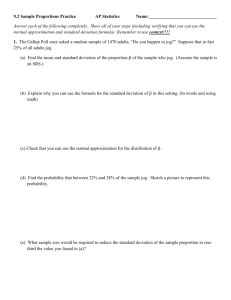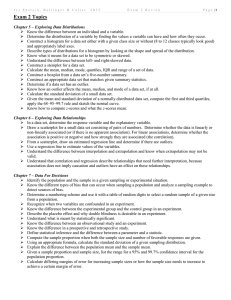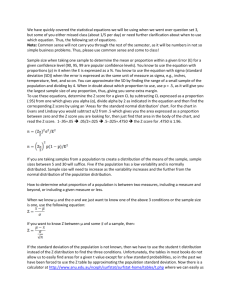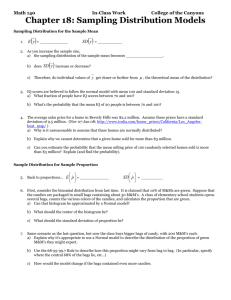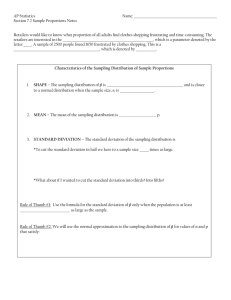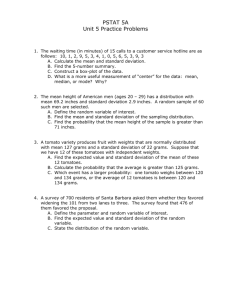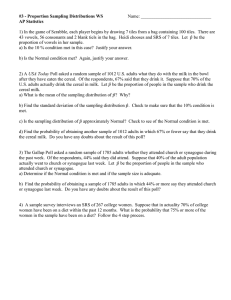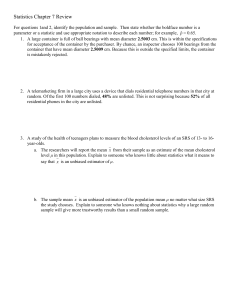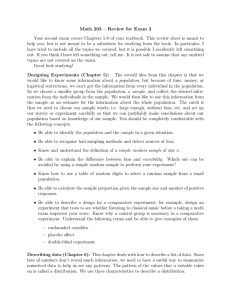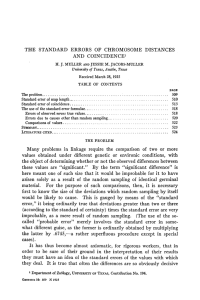Name: Date: ______ Statistics & Probability Ms. Parent Sampling
advertisement
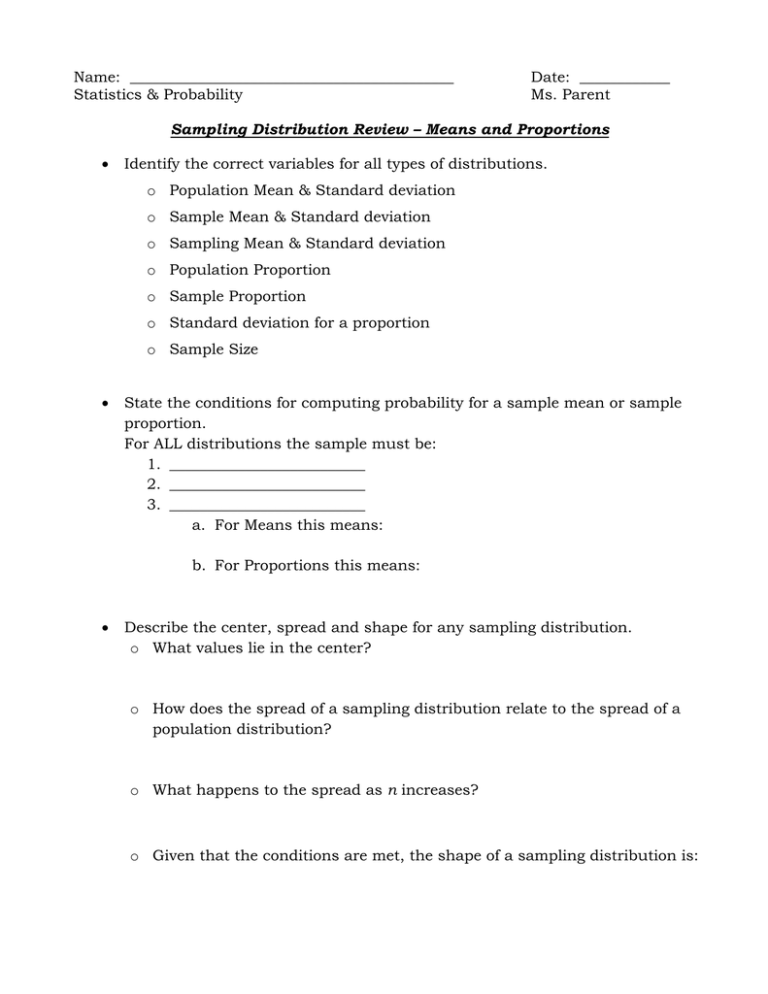
Name: ___________________________________________ Statistics & Probability Date: ____________ Ms. Parent Sampling Distribution Review – Means and Proportions Identify the correct variables for all types of distributions. o Population Mean & Standard deviation o Sample Mean & Standard deviation o Sampling Mean & Standard deviation o Population Proportion o Sample Proportion o Standard deviation for a proportion o Sample Size State the conditions for computing probability for a sample mean or sample proportion. For ALL distributions the sample must be: 1. __________________________ 2. __________________________ 3. __________________________ a. For Means this means: b. For Proportions this means: Describe the center, spread and shape for any sampling distribution. o What values lie in the center? o How does the spread of a sampling distribution relate to the spread of a population distribution? o What happens to the spread as n increases? o Given that the conditions are met, the shape of a sampling distribution is: Find unusual values, computing probability & using inference to judge a claim. o Examples: 1. In a recent year, grade 8 Washington State public school students taking a mathematics assessment test had a mean score of 281 with a standard deviation of 34.4. (Possible test scores could range from 0 to 500). Assume that the scores are normally distributed. a. A random sample of 60 students is drawn from this population. What is the probability that the mean test score is greater than 300? b. Are you more likely to select one student with a test score greater than 300 or are you more likely to select a sample of 15 students with a mean test score greater than 300? Explain. 2. Thirty-three percent of adults graded public schools as excellent or good at preparing students for college. You randomly select 12 adults and ask them if they think public schools are excellent or good at preparing students for college. Find the probability that more than five adults will say yes. 3. The world’s smallest mammal is the Kitti’s hog-nosed bat, with a mean weight of 1.5 grams and a standard deviation of 0.25 grams. Random samples of 7 bats are selected. Assuming that the weights are normally distributed, find the probability that the sample mean is between 1.6 grams and 2.2 grams. 4. The Gallup Poll once asked a random sample of 1540 adults, “Do you jog?” Suppose that in fact, 15% of all adults jog. Estimate the probability that 616 or more of the 1540 adults in the sample jog. Is this unusual? Why or why not? 5. Twenty-six percent of college students live in campus housing (based on data from the Independent Insurance Agents of America). The Providence Insurance Company randomly selects 1000 college students. Estimate the probability that less than 250 of them live in campus housing. If 250 of the selected students do live in campus housing, we should not conclude that the 26% rate is wrong, even though the probability of less than 250 is low. Why not? 6. The average math SAT score is 500 with a standard deviation of 100. A particular high school claims that its students have unusually high math SAT scores. A random sample of 50 students from this school was selected, and the mean math SAT score was 530. Is the high school justified in its claim? Explain. 7. A polling organization asks a random sample of 1500 first-year college students whether they applied for admission to any other college. In fact, 35% of all first-year students applied to colleges besides the one they are attending. What is the probability that the random sample of 1500 students will give a result within 2 percentage points of this true value? 8. Assume that the true population proportion is 0.39. Find the probability that the sample proportion will be between 0.36 and 0.42 for the following sample sizes: a. n = 500. b. n = 2000 c. Compare the above probabilities. What do you notice? Why did this happen? 9. According to Gallup, about 35% of Americans polled said they frequently experience stress in their daily lives. Suppose you are in a class of 45 students. a) What is the probability that no more than 12 students in the class will say that they frequently experience stress in their daily lives? b) If 20 students in the class said that they frequently experience stress in their daily lives, would you be surprised? Justify your answer. 10. A USA Today poll asked a random sample of 1012 US adults what they do with the milk in the bowl after they have eaten cereal. Of the respondents, 67% said they drink it. Suppose that 70% of US adults actually drink the cereal milk. Find the probability of obtaining a sample of 1012 adults in which 67% or fewer say they drink the cereal milk. Do you have any doubts about the result of this poll?

